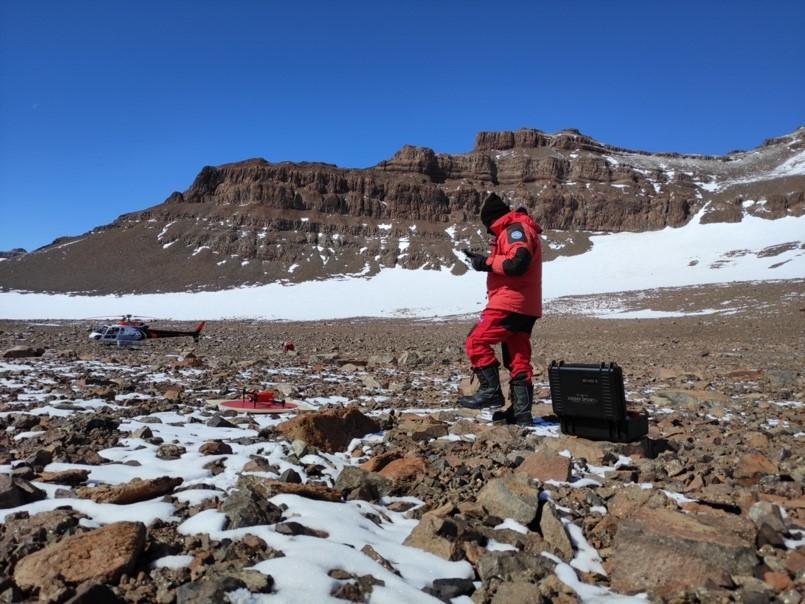- Acronym
- MicroBioMA-S
- Code
- PNRA18_00015
- Anno
- 2018
- Research area
- Life science
- Specific research topic
- The diversity of soil microorganisms and their biomolecules in Victoria Land
- Region of interest
- Antartide, Victoria Land
- PI
- Solveig Tosi
- PI establishment
- University of Pavia
- Institutional website
- https://terraeambiente.dip.unipv.it/it
- Other institutions and subjects involved
- University of Tuscia, University of Milan Bicocca
- Consistency of the research team
- Project status
- In progress
- Main stations used
- Attività svolta in Italia MZS
- The project
Antarctica represents one of the most extreme environments for life on Earth. Despite this, microorganisms, which represent the dominant life forms in the soil, adopt different strategies to survive and reproduce in this environment.
Recently, several studies have highlighted that even where environmental conditions are harsher, such as the McMurdo Dry Valleys, substrates with relatively rich microbial communities and a high degree of endemism can be found. However, data on microbial diversity are still few and punctiform. The least known aspects concern the diversity of soil-associated microbial communities and how their structure and function varies in relation to the various biotic and abiotic factors that affect life in Antarctica.
This project aims to help fill some of these gaps with a multidisciplinary approach, integrating analyses of molecular genetics, biogeochemistry, proteomics and metabolomics. Victoria Land was chosen for this research, which, between the McMurdo Dry Valleys in South Victoria Land and the moss- and lichen-rich coastal areas in North Victoria Land, has a wide variety of soils, from oligotrophic to copiotrophic. Fungal and bacterial diversity and soil community structure at the selected sites will be studied by DNA metabarcoding. To assess the activity of soil microorganisms, the whole secretome will be studied by analyzing proteomics and metabolomics data. The spatial distribution of microbial communities, their relative abundance and metabolic activity will be analyzed in relation to soil characteristics. In addition, a sophisticated GIS-based stochastic approach will be applied to analyze the data to develop a predictive model of the occurrence of microbial communities in a given environment.
- Images
-
- Motivation, importance of research
The project aims to fill some gaps in the knowledge of the microbiome of Antarctic soils. To this end, a multidisciplinary approach is exploited to identify the biotic and abiotic factors that determine the composition and functionality of soil microbial communities, with a focus on the diversity of secreted metabolites. The project also aims to shed light on the chemical and physical properties of different soil types from different ice-free areas in Victoria Land, and their role in influencing microbial diversity and functionality.
An additional purpose focuses attention on the McMurdo Dry Valleys (MDV), considered one of the closest terrestrial analogs to Mars. In particular, the Martian surfaces, called Recurring Slope Lineae (RSLs) have morphological and seasonal characteristics similar to the water tracks in MDVs. Therefore, the study of the microbiome of MDVs, particularly its survival and behavior in areas near liquid water zones, is of interest because of its astrobiological implications.
- Objectives of the proposal
First objective: to deepen knowledge of soil fungal and bacterial diversity and community structure through metabarcoding analysis.
Second objective: to combine molecular and metabolomic/proteomic approaches to understand how microorganisms in Antarctic soils interact with each other, are able to respond to different environmental stresses, form communities that are better adapted to climatic perturbations, and how they vary microbiome taxonomic composition and metabolic production in relation to soil characteristics.
Third objective: to isolate individual strains to verify and test hypotheses about metabolic potential and physiological adaptation to stress. These strains will form a collection of live specimens, useful for further applied research.
Fourth objective: based on pedological, microtopographical and geomorphological data, to study the relationship between total microbial biodiversity, metabolic activity and the complex of abiotic and biotic factors on a local scale in Victoria Land.
- Activities carried out and results achieved
In May-June 2021, the working groups of Cristina Airoldi (Milano Bicocca) and Paolo Iadarola (UNIPV) received substrate samples collected in previous Antarctic campaigns to fine-tune the metabolomics and proteomics investigation method to be used on the samples collected in this new campaign.
During December, Laura Zucconi has been busy collecting soil and rock samples from Terra Victoria. The samples (about 300 kg of material) arrived at the end of May 2022 and will soon be distributed to the different work units. In addition to sample collection, the use of a drone was also employed to take aerial shots of the sites.
- Products
